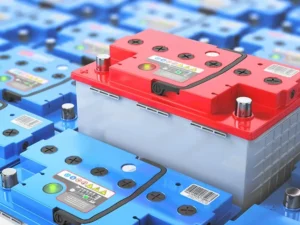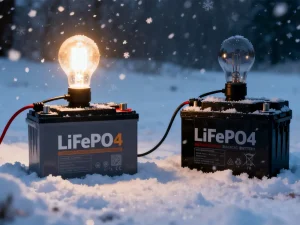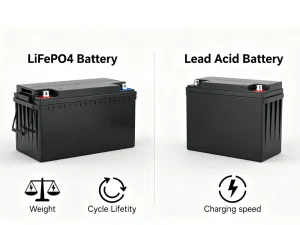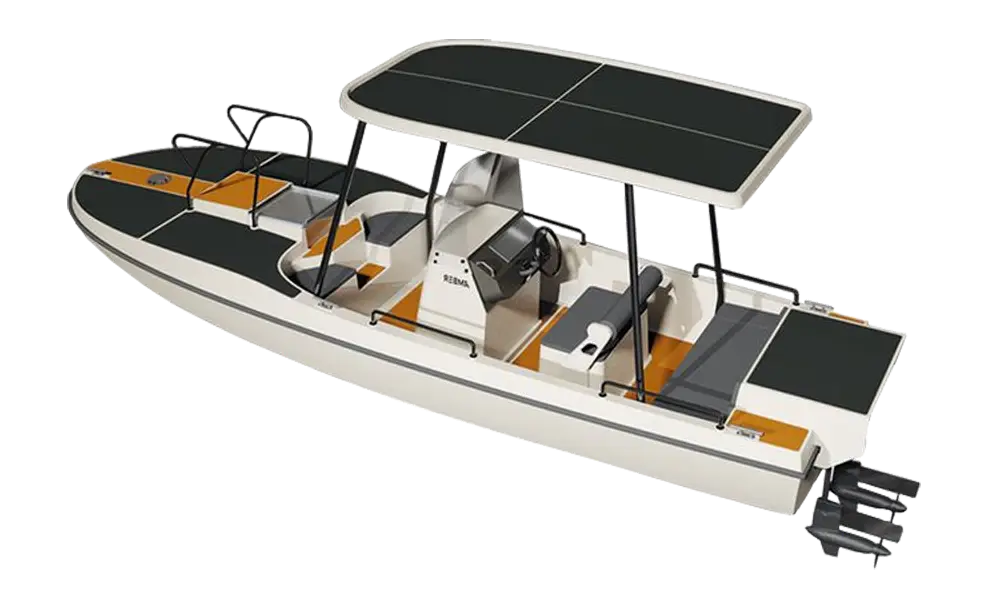When it comes to batteries, especially for things like solar power, RVs, or backup systems, you might be stuck trying to choose between LiFePO4 VS lead-acid battery. Both have been around for a while, but they are quite different in how they work and how long they last. And how you take care of them.
Picking the right one can save you a lot of hassle down the road, so it’s worth understanding the basics without all the confusing technical things.
Lead-acid batteries have been the go-to for decades. They’re affordable, easy to find, and reliable. However, LiFePO4 batteries are relatively new and have been gaining significant attention lately, as they promise longer life, improved safety, and reduced weight.
If you have heard about these lithium iron phosphate batteries and wondered if they are really worth the upgrade, you are in the right place.
This guide will walk you through the main differences between lead acid and LiFePO4 batteries.
What is a Lead Acid Battery?
Lead-acid batteries are the oldest type of rechargeable batteries. They have been in use for more than 150 years.

- Inside them, there are lead plates and liquid acid (called electrolyte).
- When you charge or discharge, a chemical reaction happens between lead and acid.
- They are heavy, bulky, and need maintenance.
- You see them in cars, trucks, bikes, inverters, UPS, and solar power systems.
They are cheap at first, but don’t last very long.
What is a LiFePO4 Battery?
LiFePO4 stands for Lithium Iron Phosphate. It is a type of lithium battery.

- Instead of lead and acid, it uses lithium and iron phosphate materials.
- It is newer technology, lighter, safer, and lasts longer.
- LiFePO4 batteries are used in electric cars, solar systems, RVs, boats, and many modern devices.
They cost more at first, but they can last for many years.
LiFePO4 VS Lead Acid Battery: Main Differences
Let’s compare lead acid VS LiFePO4 battery step by step.

(a) Weight and Size
- Lead-acid battery: Very heavy and big.
- LiFePO4 battery: Much lighter and smaller for the same power.
Example: A 12V, 100Ah lead-acid battery may weigh 30–35 kg. A 12V 100Ah LiFePO4 battery may weigh only 10–12 kg.
(b) Lifespan (How Long They Last)
- Lead-acid battery: Works for about 300–500 cycles (1–3 years depending on use).
- LiFePO4 battery: Works for about 3000–5000 cycles (8–12 years).
Clearly, LiFePO4 lasts many times longer.
(c) Charging
This is where many people search for LiFePO4 VS Lead Acid charging.
- Lead-acid battery: Charges slowly. Needs long hours to get full.
- LiFePO4 battery: Charges much faster. It can reach 100% quickly.
Faster charging means less waiting, more use.
(d) Depth of Discharge (DoD)
Depth of discharge means how much battery you can actually use.
- Lead acid: You can use only about 50% safely. If you drain more, it gets damaged.
- LiFePO4: You can use 80–90% safely without damage.
This means that a 100Ah lead acid battery yields only 50Ah of usable power, while a 100Ah LiFePO4 battery provides 80–90Ah of usable power.
(e) Maintenance
- Lead acid: Needs regular maintenance. You have to check water levels and clean terminals.
- LiFePO4: Zero maintenance. Just charge and use.
(f) Safety
- Lead acid: Can release harmful gases, risk of leaks. Not very safe indoors.
- LiFePO4: Very safe. Stable chemistry. No fire risk, no gas leaks.
(g) Cost
- Lead acid: Cheap to buy.
- LiFePO4: Expensive to buy.
But LiFePO4 lasts much longer. Over the years, it has actually become cheaper than lead acid.
| Feature | Lead Acid Battery | LiFePO4 Battery |
|---|---|---|
| Weight | Very heavy | Light |
| Lifespan | 1–3 years | 8–12 years |
| Usable Capacity | 50% | 80–90% |
| Charging | Slow | Fast |
| Maintenance | Needs care | Zero |
| Safety | Gas leaks, acid | Very safe |
| Cost | Cheap upfront | Expensive upfront, cheaper long-term |
Lead Acid VS LiFePO4: Where They Are Used
They are commonly used in different areas. Each battery type suits specific needs, depending on cost, lifespan, and performance.
Lead Acid Battery Uses
These batteries are older and less expensive, so they are commonly found in many everyday setups. Typical uses include:
- Cars, bikes, and trucks (starter batteries)
- Small inverters for homes
- UPS systems for computers and offices
- Cheap solar setups where budget matters
- Emergency lights and backup power in small shops
- Wheelchairs, golf carts, and simple mobility devices
- Toys, security alarms, and small backup systems
When comparing lead acid with LiFePO4, lead acid is typically chosen when the cost is low and short-term power is sufficient.
LiFePO4 Battery Uses
LiFePO4 batteries are modern, safer, and long-lasting. Also used in systems where performance and long life are important. Examples include:


- Electric vehicles (EVs, ebikes, e-rickshaws)
- Solar systems for homes and businesses
- RVs, caravans, and camper vans
- Marine boats and yachts
- Energy storage systems for homes, industries, and solar farms
- Long-term backup for telecom towers and data centers
- Medical devices and hospital backup equipment
- Off-grid homes and cabins
- Power tools and portable power stations
When comparing a lead-acid battery with a LiFePO4 battery, the LiFePO4 battery is the better choice for long backup, deep cycles, and frequent use.
Why LiFePO4 is Better for Solar Systems?
Solar systems require batteries that can charge quickly, discharge deeply, and last for an extended period of time.
- Lead-acid batteries in solar may fail in 2-3 years.
- LiFePO4 batteries can work for 10+ years with little maintenance.
- They also store more usable energy and don’t waste power.
Lead Acid VS LiFePO4 in Real Life Applications
Here are some practical examples to understand:
- Solar Systems: Lead-acid batteries often fail in 2–3 years. LiFePO4 can last 10+ years with deep discharge cycles.
- Electric Vehicles: EVs need lightweight and fast-charging batteries. LiFePO4 is ideal here, while lead acid is too heavy and short-lived.
- RVs and Camper Vans: LiFePO4 allows longer travel without worrying about battery life or maintenance. Lead-acid batteries add weight and require regular monitoring.
- Marine Boats: Boats benefit from the stability and safety of LiFePO4, as lead acid may leak acid or produce dangerous gases.
- Backup Power: For homes or small offices, LiFePO4 offers longer backup with lower replacement costs over time.
LiFePO4 VS Lead Acid Charging Explained
One major question readers search for is LiFePO4 VS lead acid charging.
- Lead acid: Slow, needs careful monitoring. Overcharging reduces battery life.
- LiFePO4: Fast charging, can reach 80–100% in a few hours. Built-in protection systems prevent damage.
Faster charging saves time and ensures your devices or solar systems are ready when needed.
Special Note on Charging
The methods are different. Lead-acid batteries require regular charging and can lose their capacity if overcharged. LiFePO4 supports faster charging, retains energy more effectively, and features built-in protection systems. This makes LiFePO4 safer and easier for daily use.
Environmental Impact
LiFePO4 VS lead acid battery also matters for the environment:
- Lead acid contains toxic lead and sulfuric acid. Improper disposal harms soil and water.
- LiFePO4 is more eco-friendly. It doesn’t contain lead and has a longer life, reducing waste.
How to Choose Between Lead Acid and LiFePO4 Battery?
Choosing the right battery depends on your needs, budget, and usage. Ask yourself:
How long do I need it to last?
- Short-term use: Lead-acid batteries are suitable for this purpose.
- Long-term use: LiFePO4 is better.
How often will I use it?
- Occasional backup or small inverter: Lead acid works.
- Daily use in solar, RVs, or EVs: LiFePO4 is ideal.
Do I want low maintenance?
- Lead-acid needs regular checks.
- LiFePO4 is maintenance-free.
Is weight important?
- Boats, RVs, or portable systems benefit from the lightweight LiFePO4.
Tips for Using LiFePO4 Batteries
Here are some simple tips:
- Always use a compatible charger. LiFePO4 needs a specific charging voltage.
- Avoid deep discharge below 10–20%. Even though LiFePO4 handles 80–90% DoD, protecting it increases life.
- Please keep it in a cool, dry place. Avoid extreme heat.
- Use a Battery Management System (BMS) if not built-in. It prevents overcharge, overdischarge, and short circuits.
- Regularly check connections for corrosion, even if the battery itself is maintenance-free.
Common Misconceptions
- LiFePO4 is too expensive: While the upfront cost is higher, over 8–10 years, it becomes more cost-effective because it avoids frequent replacements.
- Lead acid is always reliable: Yes. However, it requires more care and fails more quickly under heavy use.
- LiFePO4 can explode easily: No. LiFePO4 is safer and stable under normal conditions, unlike lead acid, which can leak or produce gases.
- Lead acid is better for all solar systems: Only if cost is the main concern. For efficiency, deep cycling, and long-term savings, LiFePO4 is the better option.
Final Recommendation
| Situation | Recommended Battery | Reason |
|---|---|---|
| Budget-limited, short-term use | Lead acid | Cheap upfront |
| Long-term use, solar, RV, EV, marine | LiFePO4 | Longer life, lighter, safer, less maintenance |
In most modern applications, LiFePO4 beats lead acid in safety, lifespan, and usability.
Conclusion
When comparing LiFePO4 VS lead acid, the choice depends on your needs.
- If you want something cheap for cars, small inverters, or short backup, go with lead acid.
- If you want long life, no maintenance, fast charging, and safe operation for solar, RVs, boats, or EVs, go with LiFePO4.
Yes, LiFePO4 batteries cost more at first, but they are lighter, last 5–10 times longer, and save you money in the long run. For most modern uses like solar, RV, marine, and backup, LiFePO4 is the better choice.
